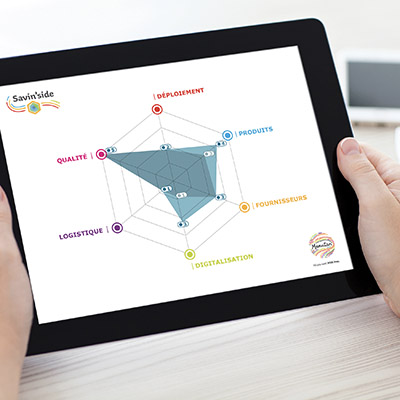Organisations worldwide must now reconcile economic and environmental challenges to ensure their development and durability. Approaching the environmental dimension is a major challenge, as it goes far beyond good waste or renewable energy management. For a company, it often involves completely rethinking its business model to integrate circular economy principles. Easier said than done! To fully grasp the scope of such a project, it is first necessary to define what the term “circular economy business models” means and what forms they take in practical terms. Raphaël Masvigner, co-founder of Circul’R, shares his expertise on the subject.
Definition of circular economy business models
The term “business model” describes how a company creates value and generates profits. It details the offer, activities, stakeholders, resources, distribution channels, etc.
Circular economy business models have the same purpose, with one key difference. In addition to generating revenue, their strategy aims to meet environmental constraints. A circular economy business model allows companies to respect the planetary boundaries, but also to build a resilient business in the long term.
Here are the nine quantifications used by the researchers:
- Climate change;
- Ocean acidification;
- Stratospheric ozone depletion;
- Biochemical flows (nitrogen and phosphorus cycles);
- Freshwater change;
- Land-system changes (deforestation);
- Biodiversity integrity;
- Atmospheric aerosol loading (air pollution);
- Novel entities (chemical pollution).
Some circular economy business models go even further than the environmental aspect and integrate a societal dimension. These business models involve, for example, working with people that have less employment opportunities or that are taking part in a professional reintegration programme, for example.
Because it remains a relatively new concept, it is important to clearly define business models that really fall within the circular economy. Otherwise, a large number of business models could be wrongly defined as circular. Having a clear idea of these models helps to fight against greenwashing.
The different circular economy business models
To identify the various circular economy business models, they can be categorised according to the three main pillars of the circular economy: Sustainable production, responsible use and end-of-life management.
Sustainable production
This first pillar refers to how products are designed and manufactured. In a circular economy, the focus is on designing sustainable products, using recyclable or biodegradable materials, and reducing the consumption of natural resources and energy.
Sustainable sourcing
This business model aims at the efficient use of resources. This includes moving from virgin and critical raw material sourcing to secondary (renewable or recyclable) material sourcing.
Eco-design
This business model involves considering the entire life cycle when designing a product, while minimising the impacts on the environment as much as possible. This may include, for example, the manufacture of modular devices, rechargeable products, etc.
Responsible use
This second pillar of the circular economy focuses on how consumers use products. It encourages more responsible consumption patterns, such as purchasing sustainable products, repairing and reusing instead of replacing, and reducing waste.
Through the functional economy, a company sells the use of a product rather than its ownership, taking into account the entire life cycle. Contractualisation is then based on the beneficial effects and benefits derived from the products and services made available.
End-of-life management
This pillar deals with the final step, when products reach the end of their life cycle. Instead of being discarded, they are reused, repaired, put back into circulation or recycled in order to guarantee them the best second life.
Sorting and collection
This long-standing business model focuses on waste management. It consists of sorting and collecting waste to create new resources.
Repair, refurbishment and recycling
With this business model, the idea is to focus on the shortest loops to create business. Companies repair, refurbish and recycle products and components to extend their lifespan or give them a new one.
Outlook for circular economy business models
Today, more and more companies are embarking on their circular transition, for various reasons. Some see this new economic model as a real lever for performance, others as a way to comply with increasingly stringent regulations, and still others to meet consumer expectations regarding the impact on the environment.
At the same time, pure players are also entering the market. Many large companies are inspired by these structures that have placed the circular economy at the heart of their operations from day one and can thus demonstrate creativity and innovation without constraint.
In this sense, some sectors in particular have accelerated their transformation:
- The energy industry which is constrained by the criticality of raw materials;
- The textile industry driven by consumer appetite;
- The agri-food industry through regenerative agriculture and the fight against waste.
Despite these trends, it should be noted that there are no "model" sectors of activity. It is much more interesting to get inspiration from exemplary companies such as Patagonia and its eco-designed technical clothing, or Interface and its sustainable flooring products, to initiate momentum in one’s own sector for sustainable development.
Among its clients, 80% are among the top major European corporations. [GM2]









